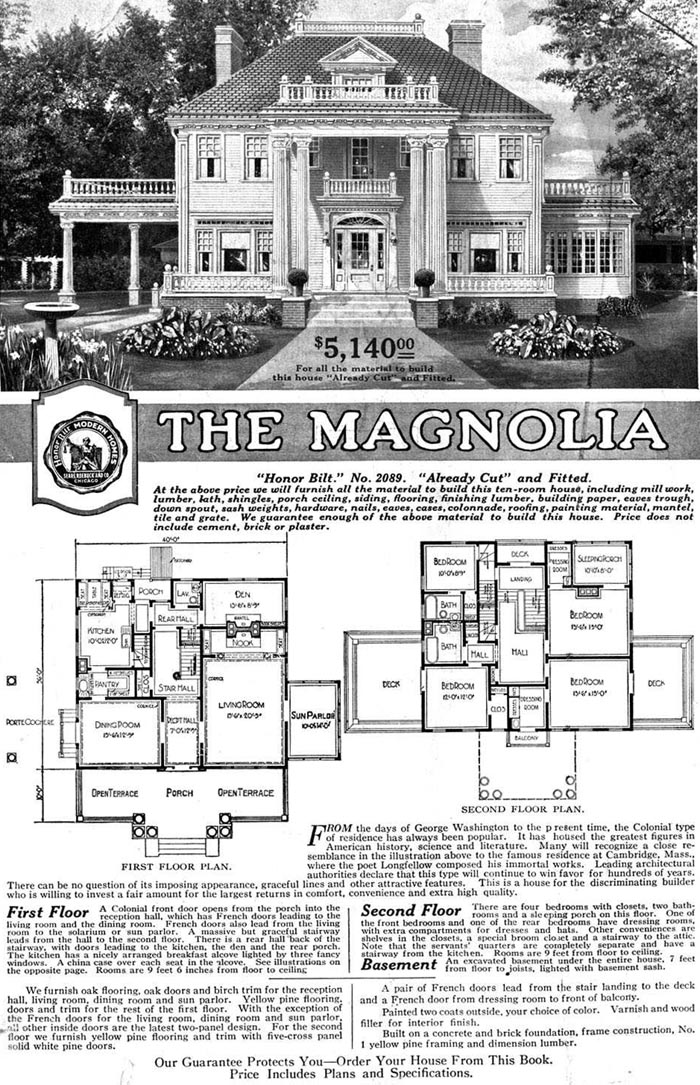734
Richmond Avenue
Northwest corner at Dorchester, Buffalo, New York
| Built: |
1909, according to the permit
published in the 1909 Buffalo Common Council Proceedings. |
| Style: |
Colonial
Revival |
| Sears Kit Homes |
|
| History: |
"The
Richmond family lived at 844 Delaware Avenue. The property
originally
encompassed all of the land between Delaware Avenue and Richmond Avenue
and was landscaped with gardens and some of the oldest trees in
Buffalo. In 1879, a petition was submitted to City Council to
rename
Rogers Road to Richmond Avenue in Mr. [Jewett M.] Richmond’s honor." - Angela
Keppel (online Sept. 2019) Richmond Avenue history: Section 7, Pages 5-6, Elmwood 2012 West Historic District Nomination James Napora, History of Richmond/Elmwood Area |
 The Magnolia 1915-1920 ($5,140 to $5,972) Source: USA House and Garden (online August 2015) |
2015 photos Built in 1909, according to the permit published in the 1909 Buffalo Common Council Proceedings. It appears that this 1909 house went up before Sears published the design in 1915-1920 ($5,140 to $5,972). If so, perhaps Sears licensed it from the firm who designed it.      Transom light and side lights  Roman smooth shaft Ionic pilaster ... Roman engaged smooth shaft Ionic column  Turned balusters ... Newel post with ball finial  Turned balusters ... Newel post with ball finial  Side (south) elevation (Detail below:)  Roman smooth shaft Ionic column  |
| What
is a Sears Modern Home? From 1908–1940, Sears, Roebuck and Company sold
more than 100,000 homes through their mail-order Modern Homes program.
Over that time Sears designed 447 different housing styles, from the
elaborate multistory Ivanhoe, with its elegant French doors and art
glass windows, to the simpler Goldenrod, which served as a quaint,
three-room and no-bath cottage for summer vacationers. (An outhouse
could be purchased separately for Goldenrod and similar cottage
dwellers.) Customers could choose a house to suit their individual
tastes and budgets. Sears was not an innovative home designer. Sears was instead a very able follower of popular home designs but with the added advantage of modifying houses and hardware according to buyer tastes. Individuals could even design their own homes and submit the blueprints to Sears, which would then ship off the appropriate precut and fitted materials, putting the home owner in full creative control. Modern Home customers had the freedom to build their own dream houses, and Sears helped realize these dreams through quality custom design and favorable financing. -
Source: USA
House and Garden (online August 2015)
|
Special thanks to Cynthia Van Ness for research assistance.
Photos and their arrangement © 2015 Chuck LaChiusa
.| ...Home Page ...| ..Buffalo Architecture Index...| ..Buffalo History Index... .|....E-Mail ...| ..